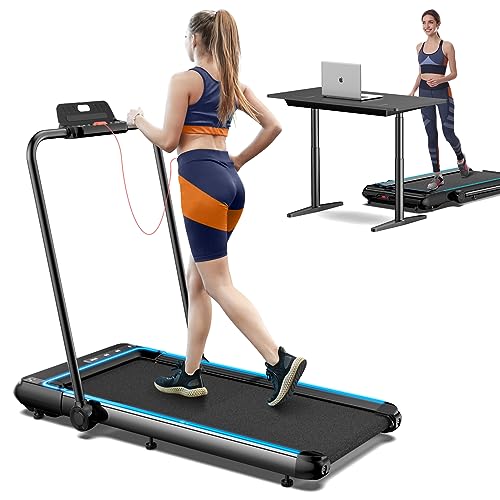How To Determine If You're At The Right Level For Gym Treadmill
Treadmills: A Comprehensive Guide to Understanding Their Functionality, Benefits, and Appropriate Selection
Introduction
Treadmills have become a staple in modern-day fitness routines, both in homes and fitness centers worldwide. They use a convenient and effective method to preserve cardiovascular health, boost endurance, and help in weight management. This post explores the various kinds of treadmills, their benefits, features to consider when purchasing, and some FAQs to direct users in making notified choices.
Types of Treadmills
When it pertains to picking a treadmill, it is vital to understand the different types offered in the market. Here are the main classifications:
1. Handbook Treadmills
- System: These treadmills have an easy design and count on the user's efforts to move the belt.
- Pros: More inexpensive, quieter operation, no electrical power needed.
- Cons: Limited functions, may not provide the very same range of workout strength.
2. Motorized Treadmills
- Mechanism: Powered by a motor that drives the belt, permitting users to stroll or run at a set rate.
- Pros: Greater range of speeds and inclines, geared up with many features such as heart rate screens and exercise programs.
- Cons: More costly and might require more maintenance.
3. Folding Treadmills
- System: Designed for those with minimal space, these treadmills can be folded for simple storage.
- Pros: Space-saving, typically motorized, versatile features.
- Cons: May be less resilient than non-folding designs.
4. Business Treadmills
- Mechanism: High-quality machines created for usage in fitness centers and gym.
- Pros: Built to endure heavy use, advanced functions, frequently consist of guarantees.
- Cons: Pricey and not ideal for home usage due to size.
5. Curved Treadmills
- Mechanism: An unique style that permits users to propel the belt using their own energy.
- Pros: Offers a more natural running experience, promotes better running type.
- Cons: More expensive and can be noisier.
Treadmill Type
Pros
Cons
Manual
Budget friendly, no electrical energy required
Minimal features
Motorized
Variety of speeds, advanced functions
Upkeep required
Folding
Space-saving, frequently motorized
May do not have durability
Industrial
Constructed to last, professional-grade functions
Expensive
Curved
Natural running experience, promotes great form
Higher price
Benefits of Using Treadmills
Treadmills use various benefits that can add to one's total health and wellness goals. A few of these benefits consist of:
- Convenient Workouts: Treadmills allow users to work out inside no matter weather.
- Cardiovascular Health: Regular use can enhance heart health by increasing endurance and promoting healthy circulation.
- Weight Management: Effective for burning calories, which aids in weight loss and management.
- Customizable Workouts: Users can control speed, slope, and duration to create individualized exercise experiences.
- Security: Treadmills provide a foreseeable surface, minimizing the risk of falls compared to outdoor running.
- Multifunctional: Many treadmills featured features like heart rate monitors, workout programs, and even home entertainment systems.
Selecting the Right Treadmill
When choosing a treadmill, prospective purchasers ought to think about a number of essential aspects:
Features to Consider:
- Motor Power: Typically determined in horse power (HP), a motor strength of a minimum of 2.5 HP is suggested for major runners.
- Belt Size: A longer and broader belt accommodates various stride lengths, offering comfort during exercises.
- Incline Settings: Adjustable slope functions replicate outside hill running and can increase workout strength.
- Weight Capacity: Ensure the treadmill can support the user's weight for security and longevity.
- Console Features: Look for user-friendly control panels, workout programs, and Bluetooth compatibility for streaming music or other functions.
Spending plan Considerations
- Under ₤ 500: Entry-level manual treadmills suitable for casual walkers.
- ₤ 500 – ₤ 1,500: Mid-range motorized treadmills that provide more functions and better sturdiness.
- ₤ 1,500 – ₤ 3,000: High-end designs with innovative innovation, larger motors, and longer guarantees.
- Over ₤ 3,000: Commercial-grade treadmills perfect for frequent use in fitness centers or training centers.
Frequently Asked Questions (FAQs)
1. How typically should I use a treadmill?
It is suggested to utilize a treadmill at least three to 5 times a week, incorporating numerous strength levels for best outcomes.
2. Can I drop weight by utilizing a treadmill?
Yes, consistent usage of a treadmill can contribute to weight reduction, especially when combined with a well balanced diet plan and strength training.
3. What is the very best speed to stroll on a treadmill for newbies?
A speed of 3 to 4 miles per hour is an appropriate variety for beginners. It's vital to start sluggish and gradually increase rate as convenience and stamina improve.
4. Do I require to utilize a treadmill if I already run outdoors?
Utilizing a treadmill can provide additional benefits, such as controlled environments and differed workouts (slope, periods) that are not always possible outdoors.
5. How do Home Treadmills maintain my treadmill?
Routine upkeep includes oiling the belt, cleaning the deck and console, and inspecting the motor for optimal performance.
Treadmills are essential tools for those wanting to enhance their fitness levels in a regulated and hassle-free manner. With various types available, understanding their functions and benefits is vital for making an informed purchase. By thinking about personal workout needs, area availability, and budget restrictions, individuals can find the most appropriate treadmill that fits their way of life. Incorporating treadmill workouts into a well balanced physical fitness routine can lead to improved health results and a satisfying exercise experience.
